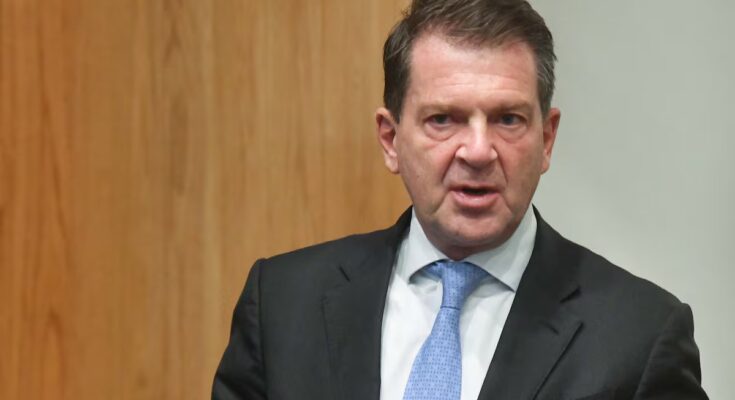The general director of Bank of America in Mexico, Emilio Romano, warns that the potential of Latin America’s second largest economy will come next year with legal and commercial security. Months after launching a major judicial reform in Mexico that changed the way judges are appointed in the Latin American country, now with direct citizens voting, the banker insisted that economic growth requires the rule of law. “At Bank of America we do not continually resort to the judiciary, as a bank that serves individuals or individuals does, but the climate of legal security is essential for the expansion of businesses and investments,” he said at a press conference this Tuesday in Mexico City. Despite the contraction of Gross Domestic Product (GDP) of 0.3% in the third quarter of the year, the banking institution forecasts an upward economic close for Mexico and economic growth of 0.6% in 2025 and 1% for 2026.
The captain of the Bank of America in Mexico stressed that there are conditions to ensure the rule of law in the country. However, he admitted that it will be necessary to ensure that the judiciary proceeds in this direction. “It will be very important that, in practice, the judiciary demonstrates that it administers justice in an impartial, swift and expeditious manner. The conditions are there, but they are not guaranteed, so we must be very vigilant,” he concluded.
Romano explained that to the extent that external tariff uncertainty is reduced and the new USMCA rules are established, the Mexican economy will be able to accelerate. “We are convinced that this process of regional integration with North America is irreversible. We have 3,000 kilometers of border with the largest economy in the world; this puts us in a very privileged situation because, furthermore, the United States, being the largest country and economy in the world, decided to realign the programs of global trade, so that instead of talking about globalization, we talk about regionalization through trading blocs. And without a country like Mexico, the United States could not be competitive,” he stressed.
The manager anticipated that next year, once the review of the USMCA is concluded, there will be greater clarity on the redistribution of supply chains globally and this will allow Mexico to emerge as one of the countries best positioned to materialize the economic growth of the Latin American country. In addition to this certainty, Bank of America says that Plan Mexico will support investments in the country. “In 2026 we hope that economic growth will surprise with these upward steps and we also have the World Cup and other elements that we believe will bring further dynamism to the Mexican economy,” he said.
Romano has acknowledged that he will continue Donald Trump’s tariff policy. However, he confided that, even with these new tariffs, Mexico will have a competitive advantage over other countries. According to their calculations, the country pays the United States an effective tariff of 5%, a very low tariff comparable only to that of Canada, which guarantees Mexico’s position as the main trading partner of the United States. According to official data, from January to July this year, Mexican exports to its northern neighbor amounted to $309,748 million.
However, the manager acknowledged that any slowdown in the US economy will impact expectations for Mexico. “Any change in the US growth trend for Mexico will be one of the issues we watch most carefully,” he admitted. Bank of America forecasts that price escalation in the country will close at 3.7% in 2025 and for next year it will stand at 3.5%. With this level of inflation, the institute expects the Bank of Mexico to continue cutting interest rates until it ends next year at a level of 6%.
Romano, however, acknowledged that physical security is the country’s main challenge, but welcomes the change in President Claudia Sheinbaum’s security strategy. In another trench, the banker stressed that the Mexican Treasury must avoid discretion by giving clear rules for businesses.
Bank of America was one of the banks behind Pemex’s financial backbone. The institute collaborated with the oil company in issuing pre-capitalized notes for 12 billion dollars. “We continue to work closely with the government to see what other alternatives there might be to improve Pemex’s capital structure and also to finance new projects, not only for Pemex, but also for the public sector,” added Roberto Núñez, director of capital markets at Bank of America in Mexico.
Núñez added that with the support of the federal government it is possible that Pemex’s financial situation will improve. In this sense he hoped to still receive support from the federal government by 2027, but to be able to go to the markets alone to finance himself. “We believe that a major contribution can still come in 2027. Let’s see how it evolves and at that time we would like to see Pemex go to the market for financing without backing,” he concluded.



